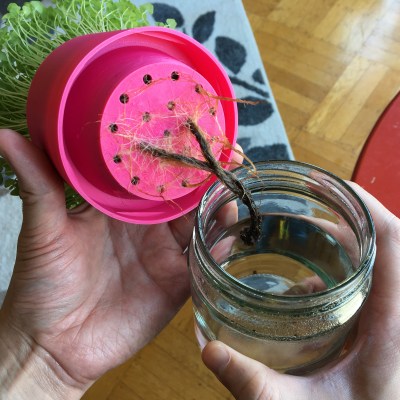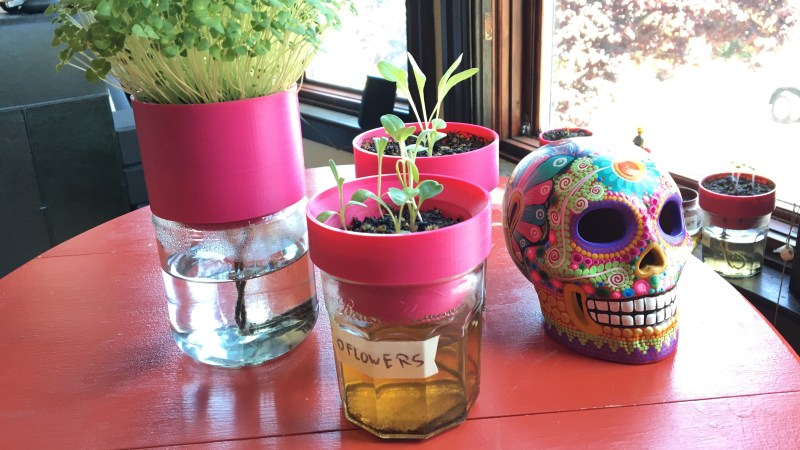Self-watering planters are low-maintenance, and common DIY projects. What we like most about [Tommy]’s design is that it reuses empty jars to create self-watering planters. After all, jars are fantastic at reliably holding water, so why not put them to work? Incorporating jars as part of the design means fewer worries about leakage, but it also means less 3D printing is needed overall.

[Tommy]’s planter screws onto the threads of a jar’s neck. Getting water to the plant is helped by a small piece of string, which acts as a wick between the soil at the top and the water in the jar at the bottom. This design works best with small plants, but on the plus side there are no moving parts or other complexities. Got a 3D printer? Models for the planter are available here.
The biggest challenge for this design is that not all jar threads are alike, so planters made in this way are not completely interchangeable across all different types of jars. Fortunately, [Tommy] provides the OpenSCAD code he used to generate his design, which he created with the help of an industry guide on how to measure the finish (or threads) of jars and lids.
If you find yourself needing to further customize your own version to fit a particular container’s threads, there’s no need to start from scratch. Unsurprisingly, threads and lids are highly standardized so chances are there exists a calculator, tool, or existing model for exactly what you need.















If Wide Mouth Mason (or Kerr) canning jars are not the default threads (cover screw), I hope someone with the OpenSCAD skills will develop one.
There are some fully parameterized(?) thread libraries, like this one i’ve used before to make bird waterers from wine bottles: https://github.com/adrianschlatter/threadlib
From experience: any see through container is very prone to develop algae if there is still standing water in it like this. It’s probably best to cover the outside with something, if you don’t want to replace the water daily and still risk growing algae instead of just keeping your plant healthy.
How so? is the algae in the water already? or in the hope?
Basically, even thoroughly cleaned jars and bottles can house some bacteria that in other mediums don’t get a chance to develop. Once emptied, cleaned, and filled with water and exposed to sunlight, these love to eat up any CO2 from the atmosphere and multiply until your jar turns greener and greener.
It’s true, that’s why on hydroponics they use black tubing because the light causes growth in the clear
Would be handy to have the bottom not covered in little holes, makes it harder to transplant something out of this setup. If it had a single hole but you used it to hold a peat pellet or something, then you could pop the whole thing out pretty easily and start a new plant.
True. And it’s not like you need all those little holes for drainage because you aren’t watering from the top.
This DIY self-watering planter idea is simply brilliant! It’s amazing how something as simple as a household jar can be repurposed into an efficient and sustainable way to care for our plants. The step-by-step guide you provided is incredibly helpful and makes this project accessible to everyone. Greetings from Germany!